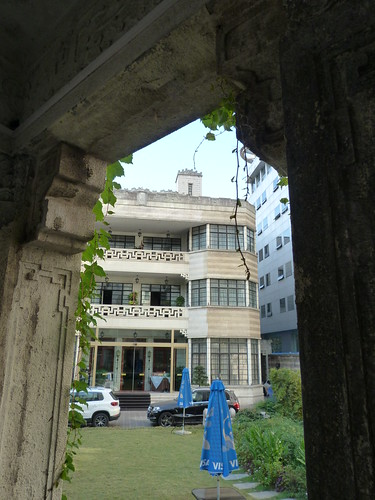The former administration building of J Kitchen & Sons in Ingles Street, Port Melbourne has been boarded up for more than five years and it's fair to say those years haven't been kind to this mid-1920s building. Just about all the windows are broken and the facade is covered with graffiti.There is some hope on the horizon with Dr Jeanne Shaw and Sophie Fenton planning to open a school in the building in the next few years and I was lucky enough to tag along when they toured the building this morning.It's not the first time I've been inside this building. I've been inside once before in May 1996 when Unichema, as Kichen's had become by that time, still used the building as offices. You can read a bit about the building in this 2009 post.Unsurprisingly, the interior is not in very good shape at all. Vandals have done their work and some of the floor has been lifted to allow the removal of asbestos.
But it's still interesting to compare my photos from 1996 with the building today and have a peak at a few places I didn't get to on my first visit.In 1996, I didn't make it into the Social Hall but here's what it looked like when it was opened from Kitchen's in-house magazine Advance in October 1925 compared with this morning.A highlight came in a strange little room on the roof of the main building with this homage to Rinso.
The Genius of Chromatavore
4 hours ago


























































































.jpg)












